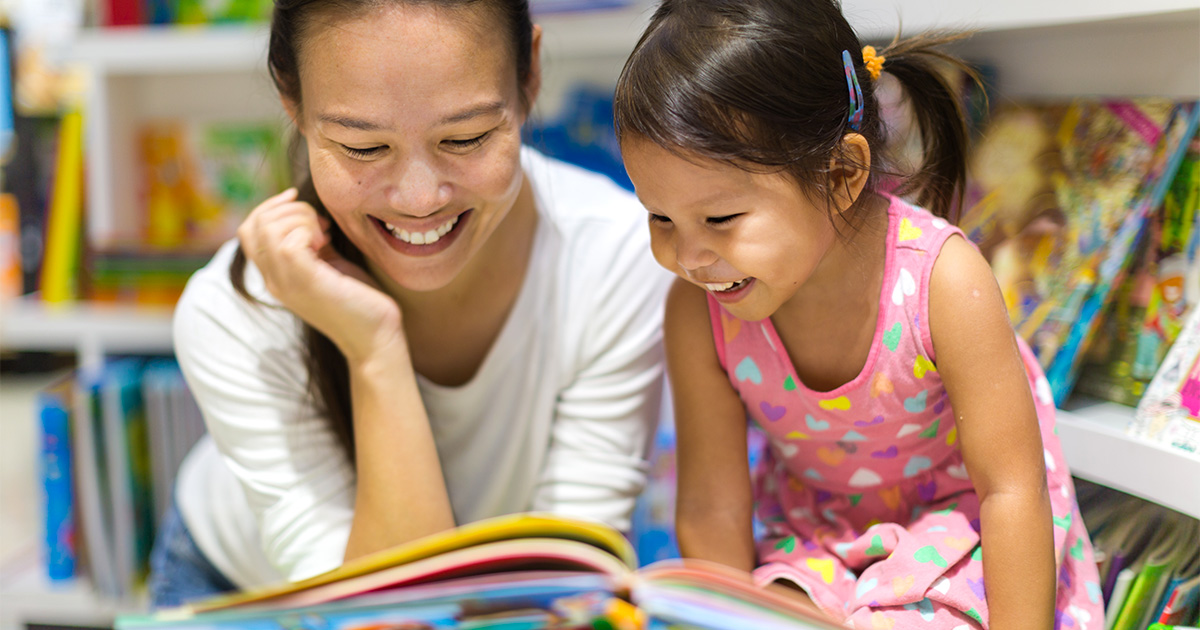- 844.422.9533
- Schedule a Tour

Learning to read is a gradual process that starts at the beginning of life, so why not focus on making sure it’s a fun experience?
The importance of reading beginning in infancy cannot be understated. Reading to your child regularly helps to cultivate communication, build vocabulary, teach them about the world, and establish bonds. Reading aloud helps children hear the sounds needed for each word and connect the words to images. As children get older, reading books together solidifies their understanding of literacy concepts and continues to extend their knowledge and vocabulary.
Reading aloud is considered one of the best ways to prepare children for learning to read.
Things to Remember:
- Introduce books early on. No child is too young to be read to.
- Pause to discuss the books you’re reading together. Don’t think of it as a task you need to get through quickly. Instead, make it an enjoyable, lively conversation!
- Make connections to things and events in the book.
- Example 1: “Do you see the boy in the book with his dog? We have a dog too! Does our dog look like this one? What’s our dog’s name?”
- Example 2: “They are at the grocery store. Remember when we went to the grocery store? Ours also has a bakery. What do you like to eat from the bakery?”
- Children love to read the same book over and over because they learn through repetition. To keep things interesting, you can change the focus of your reading to notice the illustrations, hunt for rhyming words, or add different character voices.
- Keep books in all areas of your home. Books can be in every room. Take books along to look at in the car or in a stroller too.
- Model reading. It’s important for children to see adults reading for enjoyment.
Books should be interactive and engaging while allowing for back-and-forth dialogue between you and your child. The book itself is not the most important element of reading. It’s the adult who uses the book as a tool to extend learning, vocabulary, and understanding to show children that reading books can be an exciting and rewarding adventure.
Make it Fun:
- Create story extensions or have your child draw a picture about the book you just read.
Example: After reading We’re Going on a Bear Hunt by Michael Rosen, you could suggest your child draw the different parts of the book, such as going through the wheat field, over the bridge, or up a tree. You can also act it out as you read! - Read the nursery rhyme Jack Be Nimble a few times. Have your child use blocks to build “candle sticks” of various heights to jump over.
- Read with expression. Match your voice, eyes, and body to what you’re reading. Use different voices and inflections. If you’re having fun, they will too!
- Make forts or tents to read in for a change of scenery.
- Act out familiar stories with props such as stuffed animals or puppets. Prompt your child to repeat familiar dialogue from the story, such as, “I’ll huff, and I’ll puff, and I’ll blow your house in!” from The Three Little Pigs.
- Retell familiar stories without using books. This helps children to imagine what they think the story looks like.
- Ask your child to read to you using the pictures to tell the story.
- Take a trip to your local library. Many of them offer story programs for children.
- Make reading part of your bedtime routine. When your child is tucked in, sit with them, and read a book of their choice.
No matter what type of book you’re reading, remember how beneficial the practice is beyond the pages. Reading with your child is not about getting to the end of the story, it’s about the interactions and conversations that occur along the way—before, during, and after.
